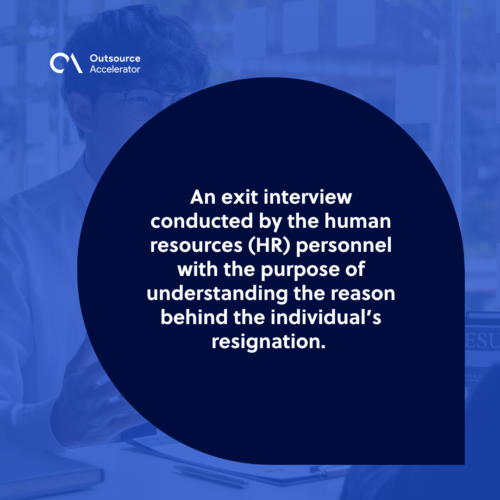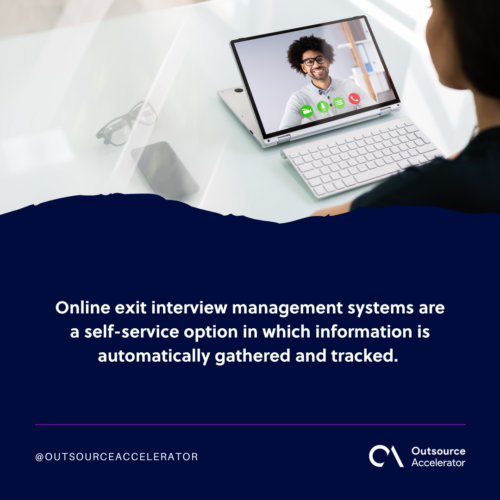Exit interview
Definition
What is an exit interview?
An exit interview happens when an employee decides to leave an organization. It is conducted by the human resources (HR) personnel with the purpose of understanding the reason behind the individual’s resignation.
Exit interviews can also help a company in identifying ways to prevent other employees from resigning. It can also be an opportunity to discuss job offers or the employee’s feedback on the management.
It’s important to find out why employees leave and what will make them stay in the company. That’s why time and effort are needed in running an exit interview.

Types of exit interview
There are different ways an exit interview can be done. Here are the four types.
In-person exit interviews
During in-person exit interviews, an HR representative meets the employee before their last day at work. For large companies, it might be difficult to interview employees one by one, but this can gather crucial information to help the company know the common reasons for resignation.
Telephone exit interviews
Exit interviews can also be conducted through phone calls. This is easier to schedule than an in-person interview.
Paper-and-pencil exit interviews
Paper-and-pencil exit interviews are usually conducted through a form prepared by the HR department. This can be done on the employee’s last day of employment.
This takes less time since HR already has the format to be given to the employee, unlike the in-person and telephone exit interview.
Online exit interview management systems
Online exit interview management systems are a self-service option in which information is automatically gathered and tracked.

How to conduct an exit interview
Here are the best practices on how to conduct an exit interview in person or over the phone.
Be timely
Once you’ve set a schedule for an exit interview, be punctual and show up on time. This lets the employee know that you value their time and are willing to listen to their insights about their work.
Keep it transparent
List down the questions and other areas you want to talk about. Encourage the exiting employee to be open and honest by reassuring them that their responses are confidential.
Keep it casual
Sometimes, exit interviews aren’t conducted in the office to make the employees relax and share their thoughts freely.
Do it one-on-one
As you want to keep the exit interview casual and transparent, it should be a one-on-one interview with an HR representative. This will give comfort to the employee by making them open to a person.
Listen more than you talk
When conducting an exit interview, it’s better to listen more than to talk so you can learn more about the company from the employee’s perspective.
This could be a tough experience, especially if you are the business head, but keep in mind that whatever you hear can be used for the improvement of your company.
Guide the conversation
As the interviewer, don’t lead the conversation, but rather, guide it by asking open-ended questions that allow the employee to open up on topics you’re concerned about.
The goal of the exit interview is to hear what the employee says and what their experience is. By following this, you will be surprised by their answers.







 Independent
Independent




